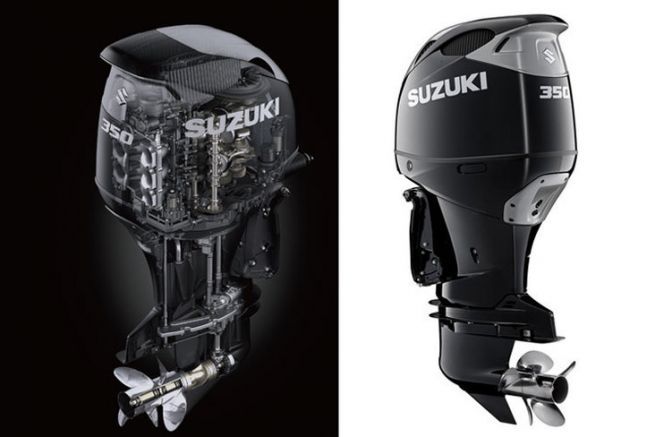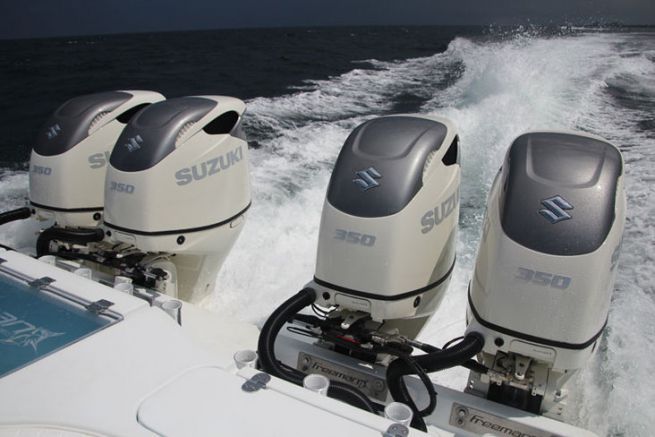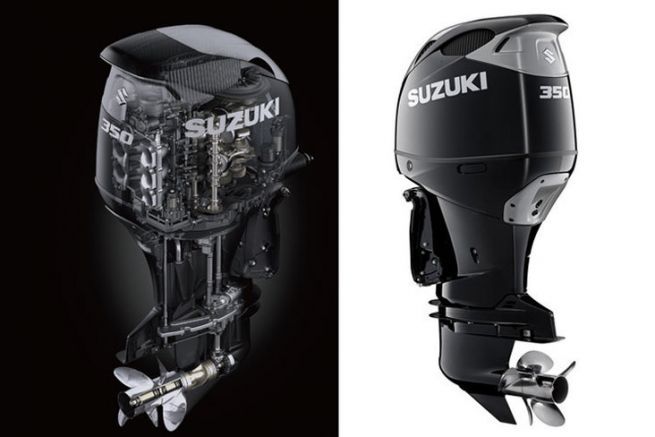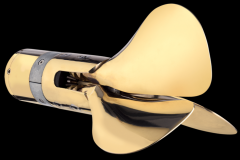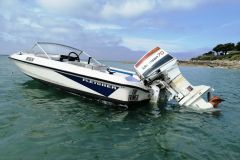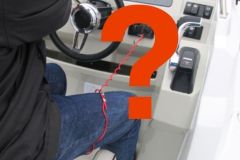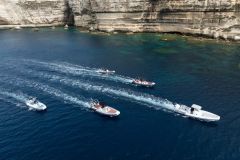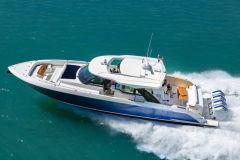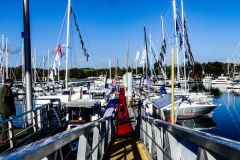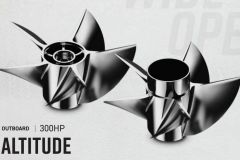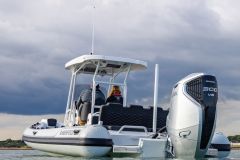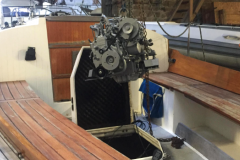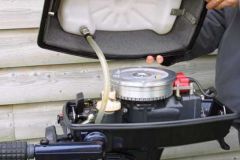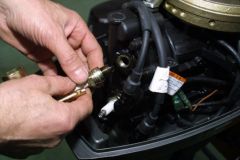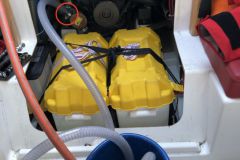The latest Suzuki outboard engine is a concentrate of technology. Here is a detailed explanation of this new engine that Bateaux.com was able to preview on the day of its worldwide launch in Miami (United States) Find here the presentation and test of this engine.
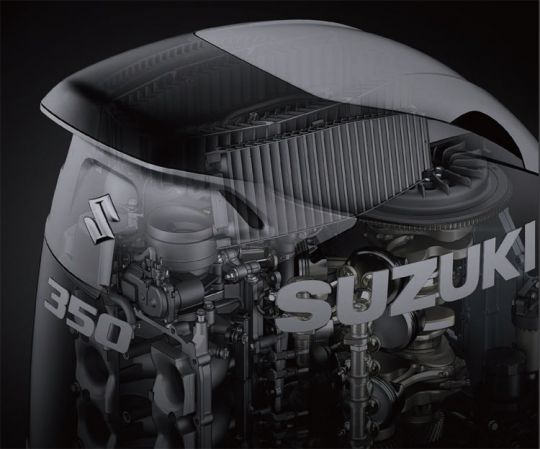
The torque power ratio
Designing an engine that combines both power and torque is a challenge. To achieve this and a power output of 80 hp/liter, Suzuki engineers had to increase the compression ratio to 12:1. A very high rate that often leads to unpleasant piston strikes that are detrimental to reliability.
To counteract this problem, engineers worked on the air system to supply the engine with very fresh air, the injection system to distribute the fuel properly and the shape of the piston heads.
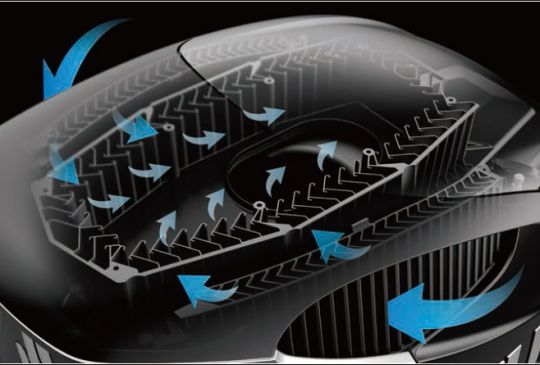
Direct intake system and Dual Louver system for fresh and dry air
At sea, if the air intake is directly accessible, the engine swallows as much water as it does air. This is the problem of marine engines. It was by taking the train on a rainy day and looking at the water particles sliding along the windows that an engineer had the idea of forcing the air speed so that the water would be stuck on a wall. Then the team developed a blade system that blocks the water and diverts it. This dual blade screen (Dual Louver) works together. The outer row of blades eliminates water spray from the boat and the inner "louvers" capture and drain any remaining moisture.
Thus the air absorbed by the engine is completely dry and does not exceed 10° above the ambient temperature.
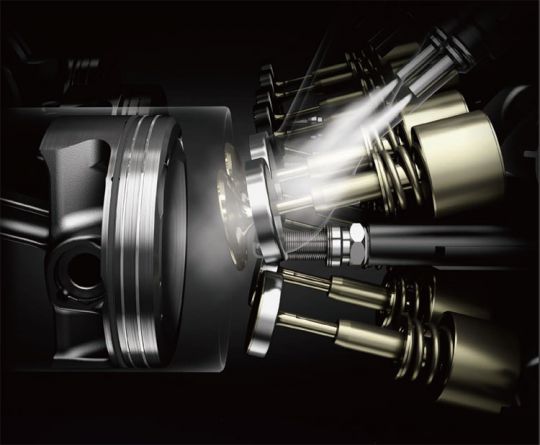
Dual injectors for perfect intake
To obtain power, you need fresh air (see above), but also a perfect delivery of fuel in the cylinder.
Fuel injection does two things, it atomizes the fuel and cools the cylinder. Cylinder cooling is an important factor in minimizing piston strikes.
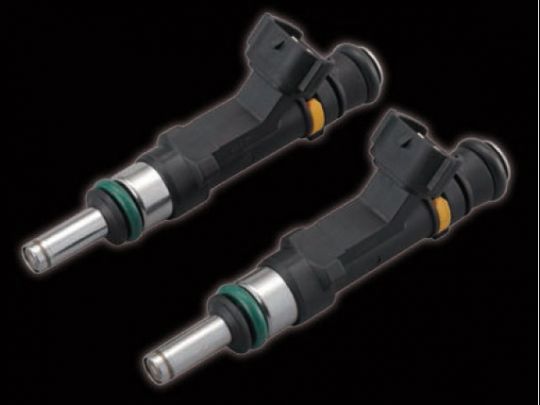
To achieve the desired power, 100% of the fuel must be injected into the cylinder at a specific time and at a specific angle. This ensures that the piston is properly cooled and the combustion in the combustion chamber is perfect.
To achieve this, Suzuki has implemented 2 injectors per cylinder. They provide the required accuracy and improve atomization. With them, no more piston stroke problems...
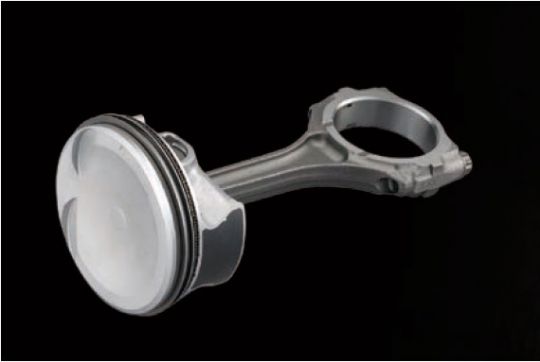
A reinforced piston
The high compression ratio places high demands on the piston. To protect it, the surface of the piston head is shot-blasted. Shot blasting creates fine bumps on the surface that evenly distribute the pressure generated by combustion. It is a more expensive and much more complicated manufacturing process, but it makes it possible to manufacture a piston that supports compression. The connecting rods also had to be reinforced.
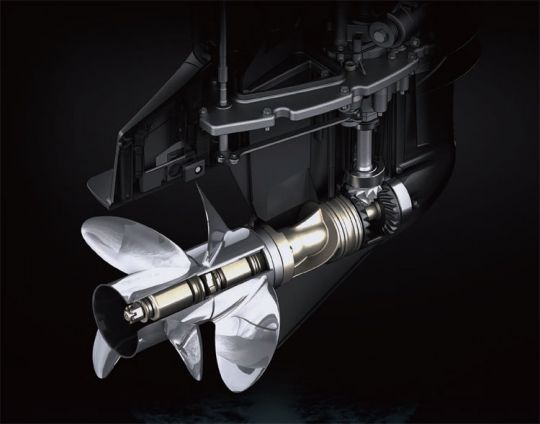
A base with 2 propellers
After the drive head, the engineers worked on the propulsion mode. To pass all the power to the propeller, they found themselves with a very large base plate (large gears) and a large propeller. Nothing good in terms of hydrodynamics.
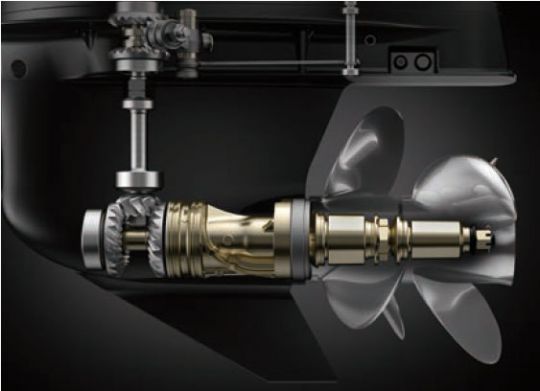
The solution of installing 2 propellers appeared, allowing a smaller base plate and reducing the torque phenomenon that exists with a single propeller. This makes the base thinner and lighter.
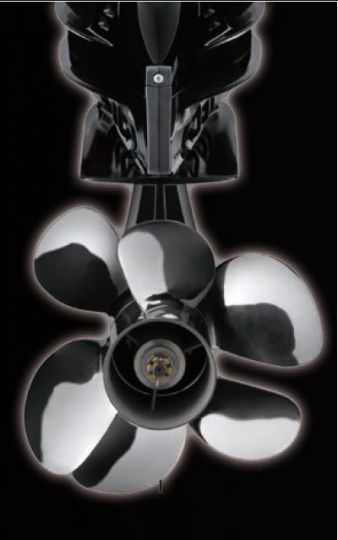
Drawing of propeller blades
Several avenues have been explored, such as the one used on Volvo's Duo Prop: a four-blade propeller at the rear and three front blades. But the result was not as good as with 2 three-bladed propellers. Basin tests were carried out to achieve this result.
The 2 propellers not only provide speed, but also a nice acceleration. The engine torque is now distributed over 6 blades (2 propellers of 3 blades). The tests also showed that the rear propeller worked in both water and air. It has therefore been reinforced to support this treatment.
The design of the base also required a lot of study given the speeds achieved, which are higher than the speeds previously worked by Suzuki outboards.
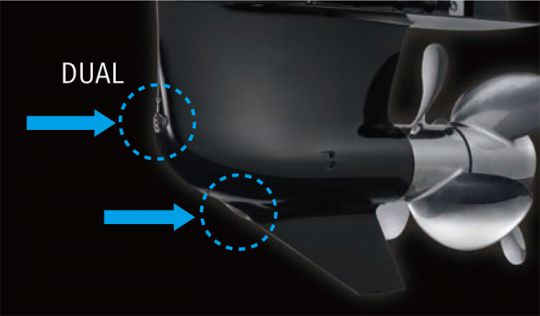
A double water intake
The new shape of the base required a review of the locations of the water intakes. Suzuki has created a main water intake and a secondary water intake, as far apart as possible. This ensures that the engine always has water for cooling, regardless of its speed.
